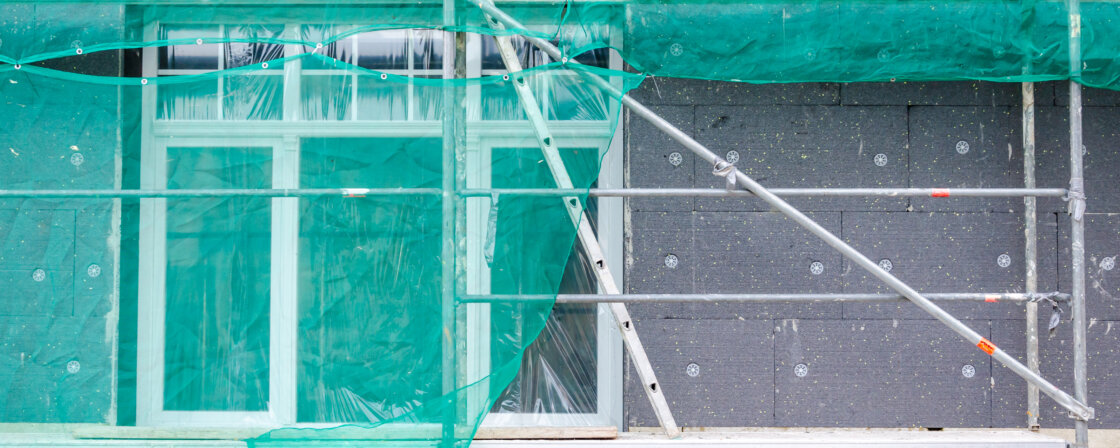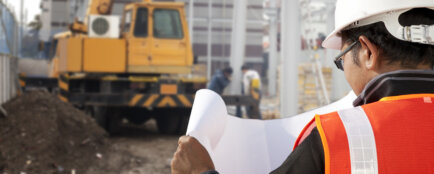What is an additional building permit and when do you need it?
An additional building permit is a chance to make amends for those who have built without the necessary permission. These may be builders who were unaware of the obligation, misinterpreted the rules, or deliberately ‘eased’ their way in. Typically, this includes extensions, garages, pergolas, fences, and even whole houses. It does not matter whether the construction is still underway or has been standing for a long time.
Under the new Building Act, the procedure is stricter. Once the building authority discovers an unauthorised building, it asks you to legalise it – and gives you only 30 days to do so. In that time, you must submit an application for an additional permit and prove that the building meets all the conditions as if you were permitting it from scratch. That is, compliance with the zoning plan, building technical requirements, relations with neighbours and other requirements.
If you do not submit the application or the authority does not permit the building, you risk having it removed. Therefore, the additional permit is not automatic and cannot be relied on as a back door. Rather, it is a last resort to salvage what you can. And the sooner you take action, the better chance you have that the authority will actually grant the additional approval.
Are you solving a similar problem?
Solutions Tailored for You
Our team of experienced attorneys will help you solve any legal issue. Within 24 hours we’ll evaluate your situation and suggest a step-by-step solution, including all costs. The price for this proposal is only CZK 690, and this is refunded to you when you order service from us.
I Need help
- When you order, you know what you will get and how much it will cost.
- We handle everything online or in person at one of our 6 offices.
- We handle 8 out of 10 requests within 2 working days.
- We have specialists for every field of law.
New Building Act: tougher rules and shorter deadlines
The new Building Act fundamentally changes the rules for additional building permits. Compared to the previous legislation, the approach is stricter and the time to remedy is shorter. Whereas previously it was possible to deal with the authority in a relatively flexible manner and often the procedure for the removal of the building was postponed, the new procedure allows both procedures to run concurrently. In other words, while the building authority will give you the option of legalisation, it is also preparing the option of having the building demolished.
A fundamental change is the introduction of the aforementioned 30-day deadline from the receipt of the authority’s notice. Within this period, you must submit an application for an additional permit, otherwise the procedure for the removal of the building will start in full swing. Later remedies will no longer be taken into account.
The aim of the new regulation is to increase the enforceability of the rules and to prevent abuse of the institute of the additional permit. The authorities have less room for tolerance, so builders should not rely on “getting away with it”. So if you have a black building or a building without the necessary permits, you need to act quickly and prepare for the authorities to be more consistent than before.
How the additional permit procedure works step by step
You can initiate the procedure for additional building permits on your own, or you can be invited to do so by the building authority. In either case, you must submit an application and show that the building meets all the legal conditions – just as if you were permitting it in advance. The key is to prove compliance with the zoning plan, building regulations, relations with the neighbours (for example, in the form of their consent) and ownership of the land.
An administrative fee is payable with the application – usually CZK 1,000 for residential buildings, the amount may be higher for other buildings.
The procedure may also include an assessment of the building by experts, for example in terms of fire safety or environmental impact. It all depends on the type of construction.
If the authority does not grant the application – for example, because the building contravenes the zoning plan or interferes with the rights of neighbours – it will start (or complete) proceedings to remove the building. For this reason, it pays to act early and resolve the situation before the official notice arrives. The sooner you get involved, the better your chances of legalising the building and avoiding demolition.
Tip for article
Are you planning an extension, garden house or smaller building on your property? You may be able to get so-called planning consent – a simpler and quicker option than full planning permission. From July 2024, a new Building Act has been in force which has changed the rules of the game. In our article, we explain when and how to apply for planning consent, what the new deadlines are and what to look out for so the authority doesn’t return your application.
What to watch out for to get a building permit
An additional building permit is not a formality – the authority will only issue it if the building meets all the legal requirements. And this is where the bread often breaks. The most common obstacle is non-compliance with the zoning plan. For example, if you have built a house in a zone designated for greenery or manufacturing, the authority is unlikely to permit your building. Another common mistake is a lack of consent from neighbours – this can be crucial, especially if the building interferes with their view, glare or peace of mind.
A very problematic situation is if you have built on someone else’s land or on land to which you have no legal title (e.g. a lease). In this case, a supplementary permit is usually not issued at all.
On the other hand, the chances of success are higher if it is a smaller building (e.g. a garage or pergola) that stands on your land, complies with the zoning plan and does not interfere with the rights of others. In such cases, the authorities will usually allow legalisation.
In general: the fewer problems, the better the chances of approval. However, if you find that the building does not meet the basic conditions, it may paradoxically be cheaper and easier to remove it voluntarily than to wait for forced demolition and fines.
Building supervision is expensive, but it is definitely worth it. It controls the quality of materials and the progress of construction work. This ensures that everything goes according to plan. If you plan to build with your own hands, you can’t avoid it. In this case, the presence of a building supervisor is required by law. In our article, we looked at what exactly a building supervisor does, how much it costs and how to choose the best one.
Don’t wait until it’s too late: how to avoid liquidated damages
Delaying dealing with an unauthorised building may not pay off. The new Building Act has introduced stricter rules and more rigorous procedures by the authorities. If you don’t respond to a call for remedial action or try to ignore the problem, you risk heavy fines – up to hundreds of thousands of crowns for individuals. And it doesn’t stop there. The authority may decide to order the removal of the building, which means the obligation to demolish the building at your own expense.
Moreover, a black building complicates any disposition of real estate. If you want to sell the house, rent it out or use it as collateral for a mortgage, for example, you will run into. Banks and buyers often check the legality of buildings, and once they find irregularities, the deal falls through.
That’s why it pays to deal with the situation as soon as possible – ideally before the official notice arrives. Applying for additional permits early can significantly improve your prospects. Better still, contact a professional, such as a solicitor or construction law specialist, who can help you get the whole process right and without unnecessary mistakes. Ultimately, this can save you not only money but also a lot of stress.
Summary
The new Building Act tightens the rules for additional building permits and significantly shortens the deadlines for remedies. Builders who have built without a permit – whether by mistake, ignorance or deliberately – have 30 days from the authority’s call to legalize the construction. It is not enough to simply submit an application; it is necessary to demonstrate compliance with legal requirements or face removal of the structure and heavy penalties. A smaller building on one’s own land without affecting neighbours increases the chances of success. Delaying a solution can backfire, so acting quickly is key – ideally with the help of a lawyer.




